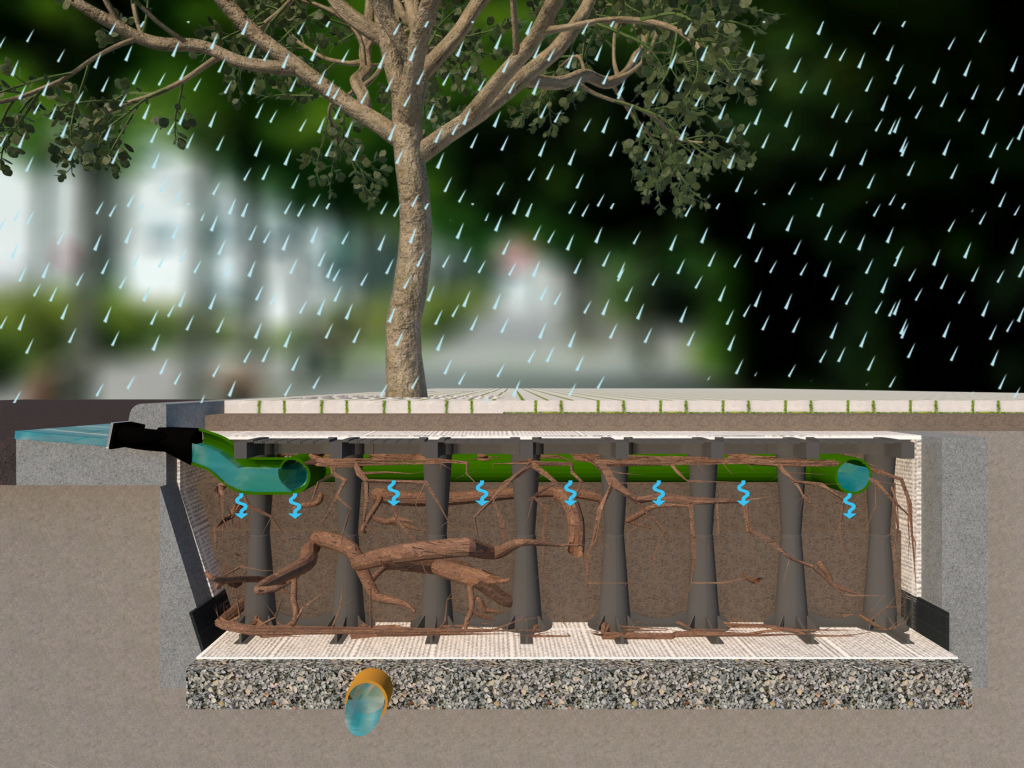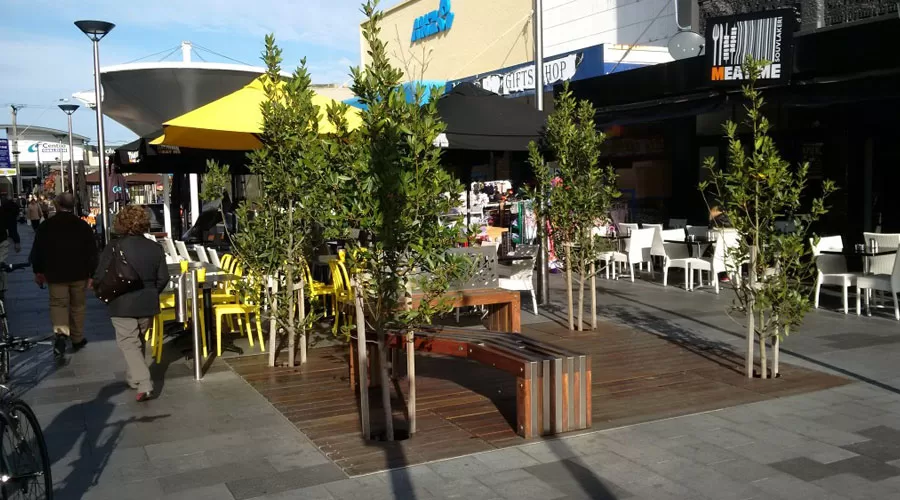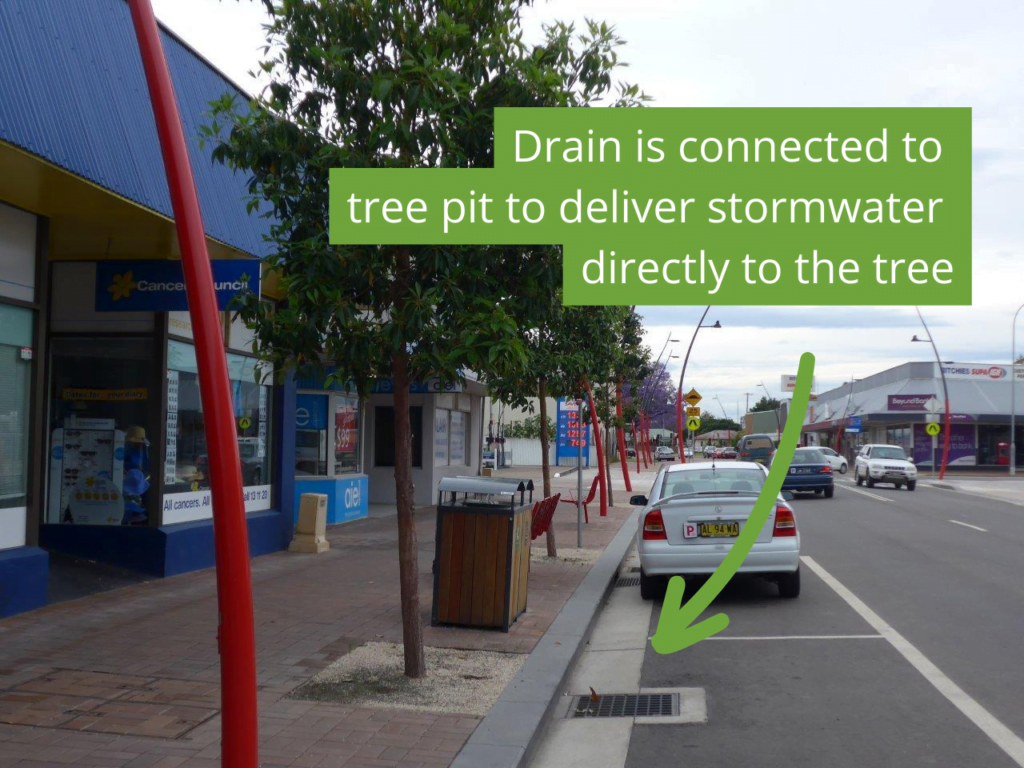Posted by Kristyn Maslog-Levis on Tue, Feb 11, 2014 @ 7:32 PM
What is Water Sensitive Urban Design(WSUD)?

Table of Contents
As urbanization continues to reshape our landscapes, the concept of a Water Sensitive Urban Design (WSUD) has gained prominence as a holistic approach to address the challenges of water management in cities. Let’s look into the intricacies of WSUD, examining its principles, benefits, challenges, and implementation strategies.
Water Sensitive Urban Design (WSUD) is also known as Low Impact Development (LID) in the United States, and Sustainable Urban Drainage Systems (SUDS) in the United Kingdom.
It all refers to the land planning and engineering design approach that integrates the urban water cycle, including stormwater, groundwater, and wastewater management and water supply, into urban design. This is done to minimise the environmental degradation as well as improve the look of the area by creating a circular economy of urban water use.
In urban environments, impermeable surfaces like roads, roofs, driveways, and walkways prevent water from soaking into the ground, resulting in what we call stormwater runoff. Additionally, the presence of vehicles and industrial activities in these areas contributes to the accumulation of pollutants on these surfaces. When it rains, this polluted runoff is funneled through drains, eventually reaching creeks and rivers, causing pollution and degradation to environmentally crucial systems. Water-Sensitive Urban Design (WSUD) is a solution designed to enhance urban areas’ capacity to capture, treat, and recycle stormwater, preventing it from polluting and harming our natural waterways and ensuring rain water is used in the environment in which is falls more efficiently.
Why Use Water Sensitive Urban Design When Designing your Urban Environment?
According to the guidelines released by the South Eastern Councils in Melbourne Victoria, WSUD has been identified as a “means to control flows and filter stormwater to remove pollutants”.
Stormwater is the water that runs off urban surfaces after heavy rainfall. The report said it has been identified as the key cause of pollution and declining health of waterways.
“With increased urban development, the proportion of impervious surfaces in our catchments increases. This increases the velocity and amount of water running into our waterways, creating problems of erosion and flooding and changing natural flow regimes, with associated ecological damage. It also washes more pollutants into our streams, further impacting river health.”
Victoria councils, like other councils in Australia, have recognised the importance of sustainable water management such as WSUD. The release of various guidelines enables organisations to have a first point of reference for their projects.
The design “integrates urban water cycle management with urban planning and design, with the aim of mimicking natural systems to minimise negative impacts on the natural water cycle and receiving waterways and bays”.
Types of WSUD
| Stormwater Treatment Element | Application | Litter/Organic Matter | Coarse Sediment | Fine Sediment | Total Phosphorus/Nitrogen Removed | Oil & Grease | Reduction in Runoff Volume | Construction | Maintenance |
|---|---|---|---|---|---|---|---|---|---|
| Vegetated Swales | Primary/Secondary | H | H | H | L | L | L | L | L |
| Bioretention Swales | Primary/Secondary/Tertiary (may need sediment and litter pre-filtering) | H | H | H | M | L | M | L | M |
| Bioretention Basins/Raingardens | Primary/Secondary/Tertiary (may need sediment and litter pre-filtering) | H | H | H | M | L | M | L | M |
| Sediment Basins | Primary, often combined with detention | M | H | M | L | L | L | L | M |
| Ponds/Wet Basins | Primary/Secondary/Tertiary | H | H | M | L | L | L | L | M |
| Constructed Wetlands | Secondary/Tertiary | – | – | H | H | L | M | L | H |
| Exfiltration Systems | Secondary (needs sediment and litter pre-filtering) | – | – | – | H | L | M | L | M |
| Soil Cells | Various (often combined with filtering and detention) | L | L | L | H | L | H | H | L |
Soft vs Hard Engineering of Landscapes
Soft engineering and hard engineering are two approaches used in water management and urban design.
- Soft Engineering: In the context of Water Sensitive Urban Design (WSUD), soft engineering refers to the use of natural or nature-based solutions to manage water, such as vegetation, soil, and natural drainage systems. Soft engineering aims to mimic natural processes and ecosystems to reduce runoff, improve water quality, and enhance the aesthetic and ecological value of the landscape. Examples of soft engineering in WSUD include bioretention swales, vegetated basins, soil cell tree pits, and constructed wetlands.
- Hard Engineering: Hard engineering, on the other hand, involves the use of man-made or engineered structures to manage water, such as pipes, concrete channels, and traditional drainage systems. In the context of WSUD, hard engineering components may be necessary in situations where factors such as the need to transport water across paved areas, land availability, or topography require the use of piped or hard components. Examples of hard engineering in WSUD include piped drainage systems, concrete structures, and permeable hard surfaces such as rock rip-rap or paving.
WSUD elements are most effective when vegetation and trees are used in their design, factors such as the need for water to be transported across paved areas, land availability, and topography may require the incorporation of hard components into a broader WSUD system.
While there is no standard approach that should be applied to all situations, and a hybrid solution that combines both soft and hard engineering components may be necessary to address site-specific opportunities and constraints, Creating softscapes with increased greenery and trees will be a great economic, environmental and health impact to the local community.
Case Study
In places such as Canada, capturing stormwater is a mandatory requirement for all new constructions, as a means to effectively manage water and prevent a higher level of pollutants from entering municipalities.
In flat open areas such as carpark where pollutants and stormwater runoff can be a concern Citygreen’s Stratavault offers a cohesive solution that connects stormwater management with landscape tree design. Instead of stormwater immediately entering the city infrastructure and depleting the valuable water resource by taking it out of area, our integrated water sensitive urban design directs the stormwater into the Stratavault matrix.
This innovative system allows trees and soil to utilize the water for their own needs and growth while effectively cleaning the excess water of contaminants before the water enters the pit’s base chamber. Additionally, this design enables the recycling of water for on-site irrigation & a slower release back into the city’s infrastructure during periods of lower demand

What are the Key Principles of WSUD?
Some of the key principles of WSUD as stated in the Urban Stormwater: Best Practice Environmental Management Guidelines (BPEMG) include:
- Protect and enhance natural water systems within urban environments.
- Integrate stormwater treatment into the landscape, maximizing the visual and recreational amenity of developments.
- Improve the quality of water draining from urban developments into receiving catchment environments.
- Reduce runoff and peak flows from urban developments by increasing local detention times and minimising impervious areas.
- Minimise drainage infrastructure costs of development due to reduced runoff and peak flows.
What are the Benefits of WSUD?
The top benefits of using water sensitive urban design include:
- Flood Mitigation: By reducing stormwater runoff and increasing water infiltration, WSUD minimizes the risk of flooding during heavy rain events.
- Improved Water Quality: Natural filtration methods used in WSUD systems effectively remove pollutants, enhancing the quality of water entering streams and rivers.
- Urban Cooling: Urban green spaces and water features provide cooling effects, mitigating the urban heat island effect and improving overall urban livability.
- Biodiversity Enhancement: WSUD encourages the creation of habitats for various species, contributing to urban biodiversity and ecosystem health.
- Enhanced Tree Growth: By directing extra resources to nearby trees you give the tree more opportunity to successfully grow
- Increased Social Outcomes: Improving the greenery, liveability, and functionality of shared urban spaces increases the the physical, social and mental health of the community.
What are the Challenges of WSUD?
Given that water-sensitive urban design is a relatively new concept within the realm of urban landscaping, there emerge several challenges in the process of designing new WSUD spaces. These include:
- Regulatory Barriers: Traditional regulations and codes may not be aligned with WSUD principles. Overcoming regulatory hurdles and advocating for changes to local ordinances can be a significant challenge.
- Lack of Awareness: Many stakeholders, including local governments, developers, and the general public, may be unaware of the benefits and importance of WSUD.
- Funding Constraints: WSUD projects may require upfront investments for designing, construction, and maintenance. Convincing stakeholders to allocate budgets for these projects in the face of other competing priorities can be challenging.
- Infrastructure Retrofitting: Integrating WSUD into existing urban areas often requires retrofitting existing infrastructure. This can be complex, costly, and disruptive to ongoing operations.
- Maintenance and Long-Term Management: Proper maintenance of WSUD components is essential to their effectiveness. Ensuring consistent and appropriate maintenance practices can be challenging, especially if communities lack the necessary resources or knowledge.
- Data Availability: Designing WSUD systems requires accurate and up-to-date data on rainfall patterns, land use, and hydrology. In some cases, obtaining this data may be a challenge, especially in areas with limited resources for data collection.
- Interdisciplinary Collaboration: WSUD projects require collaboration among various disciplines, such as urban planning, landscape architecture, civil engineering, and environmental science. Coordinating and aligning efforts across these disciplines can be complex.
- Resilience to Climate Change: WSUD systems must be designed to accommodate changing climate patterns, including more frequent and intense rainfall events. Ensuring the resilience of these systems can be a challenge.

Citygreen® products are designed to ensure it supports the effort for a sustainable water management. The Stratavault’s™ modules leave over 94 percent of its total volume for root growth and storm water harvesting. Find out more about the products here.

